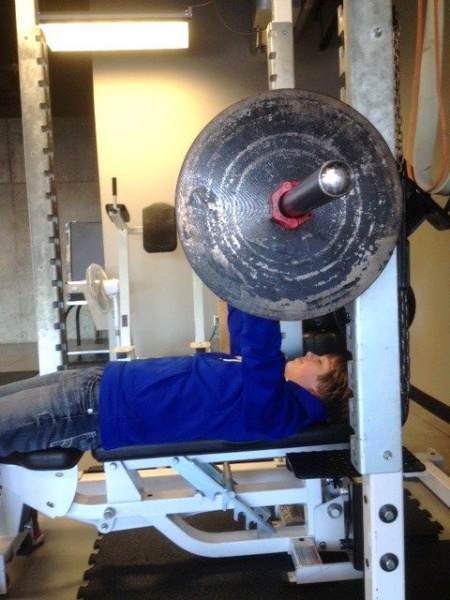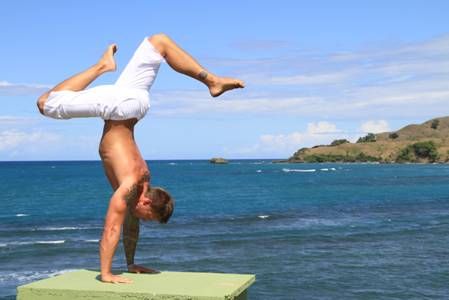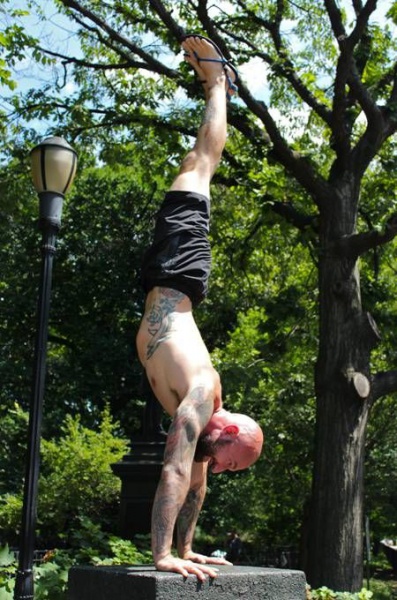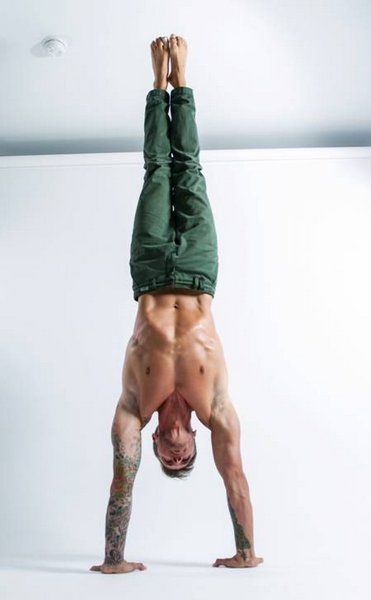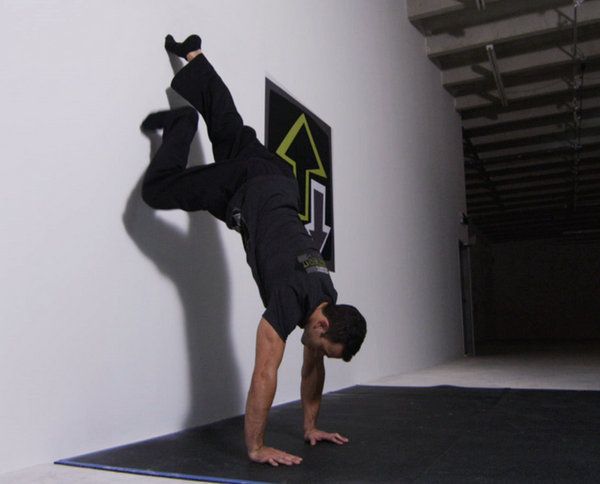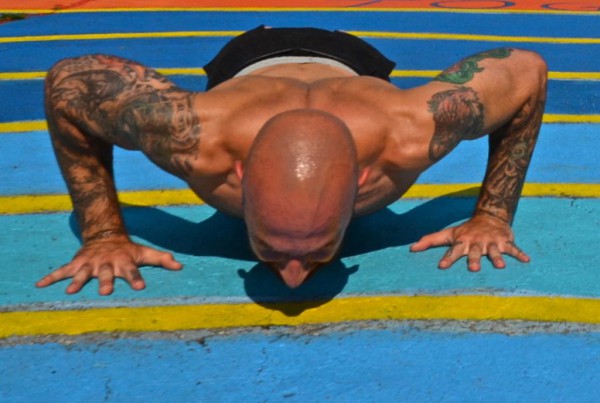 As someone who loves a challenge, I get excited when someone tells me it’s impossible to get strong using only calisthenics. Though at first I was skeptical, too, I’ve learned firsthand how effective bodyweight training can be.
As someone who loves a challenge, I get excited when someone tells me it’s impossible to get strong using only calisthenics. Though at first I was skeptical, too, I’ve learned firsthand how effective bodyweight training can be.
Most coaches tell us that to get stronger you need to keep adding weight to whatever lift you want to improve on. If you want to bench press more, they say to use some sort of pyramid training and ramp up the weight each session. With the exception of Stanford, that’s what’s taught at most collegiate and high school strength programs. Imagine the frustration on a 16 year old kid when I tell him I won’t let him bench press until he can perform 20 quality push-ups off the floor!
As I was talking with a student of mine named Caden during his first session at my facility, the topic of bench pressing inevitably came up. We discussed my background in competitive powerlifting and, as you would expect, he wanted to know how much I could bench. After telling him my best competition lift he responded with a story about how some other kid at his school can supposedly press more than me. So of course I had to know what his own best effort was on the bench.
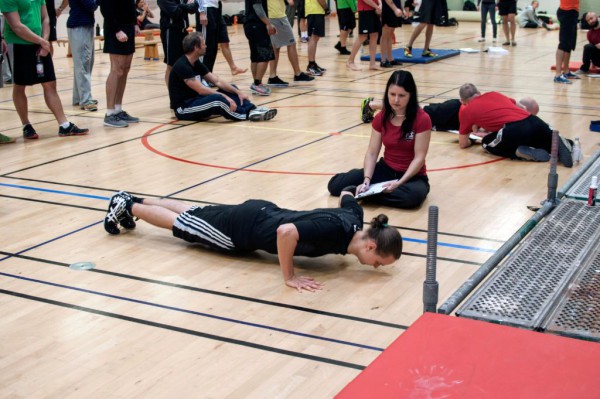 “One hundred thirty-five pounds… once,” he stated. For those of you that have trained young teenage athletes, you know they need proof before they believe anything you say. So I decided to challenge him a bit. I told him I could help him improve on that 135×1 in only 4 weeks without even putting him on the bench. In fact we would be using a steady diet of push-ups. Caden scoffed at me. Why wouldn’t he? Remember the old school thinking at most high schools?
“One hundred thirty-five pounds… once,” he stated. For those of you that have trained young teenage athletes, you know they need proof before they believe anything you say. So I decided to challenge him a bit. I told him I could help him improve on that 135×1 in only 4 weeks without even putting him on the bench. In fact we would be using a steady diet of push-ups. Caden scoffed at me. Why wouldn’t he? Remember the old school thinking at most high schools?
“Alright, but it’ll never happen,” he promised.
Let’s stop for a second and quickly compare a textbook push-up to a text book bench press. In a push-up, the hands are under your shoulders while the body is elevated and tight (abs, lats, glutes and thighs) to prevent any sagging or arching. As you descend it should feel like you are screwing your hands into the floor, the lats get tighter, and the elbows stay close to the body. Everything is tracking straight and tight. Then once your nose or chest touches the floor you reverse the motion as slow or fast as you want. Speed will build explosive strength and slow will teach you to grind out a heavy rep for strength.
Compare that to a textbook bench press; before you lower the bar to your chest, the shoulder blades should be retracted, glutes are tight and feet are driving into the ground. As the descent begins it should again feel like you are screwing your back into the bench, tightening the lats, and keeping the elbows near the body. Then after the bar touches the chest you can drive the meaty part of your thumbs into the bar almost as if you were rotating your elbows in and driving yourself away from the load to lock it out over head.
Notice any similarities?
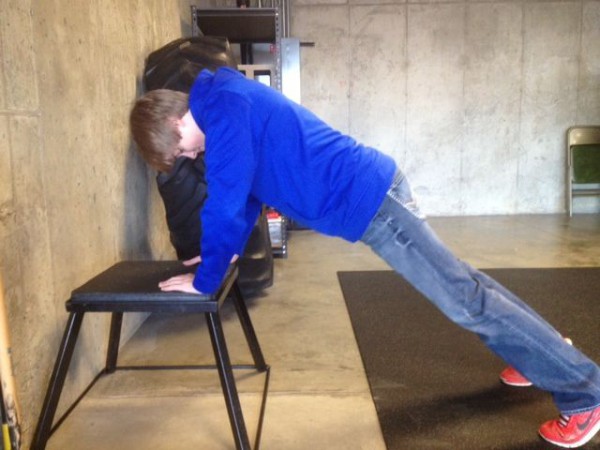 Now let’s take those same principles and apply them to Caden. On day one he could not do any of this. Once he was on the floor it kind of looked like a saggy banana getting tazed. We needed to tap into the Convict Conditioning principles and start teaching push-up technique against a wall. As he grew more proficient, his push-up got closer to the floor. It’s important to note that although we always had a specific number of reps in mind for each day, once technique failed, his set was over. Many times he wanted to crawl under the bar and “just try” the bench press again, I happily refused to allow that. Remember sometimes young teenage clients need proof or an “A-ha moment” before they buy into you or your system.
Now let’s take those same principles and apply them to Caden. On day one he could not do any of this. Once he was on the floor it kind of looked like a saggy banana getting tazed. We needed to tap into the Convict Conditioning principles and start teaching push-up technique against a wall. As he grew more proficient, his push-up got closer to the floor. It’s important to note that although we always had a specific number of reps in mind for each day, once technique failed, his set was over. Many times he wanted to crawl under the bar and “just try” the bench press again, I happily refused to allow that. Remember sometimes young teenage clients need proof or an “A-ha moment” before they buy into you or your system.
Caden’s “A-ha moment” came 4 weeks later. After dialing in the pushup similarities to the bench press in his warm ups, we loaded the bar with 135. He gave me a solid 5 rep effort. If you use one of those 1-rep max calculators, that’s roughly a 20lb increase in max effort strength in 4 weeks using nothing but pushups. For those of you that are wondering what other “assistance work” I had him do? It was all calisthenics- bridge progressions, bodyweight squat progressions, lying leg raises, and horizontal pull-ups. Caden never touched a weight his first 4 weeks in my facility.
Calisthenics work! Fire it up!!
About Corey Howard, PCC, RKC, CK-FMS: Corey Howard strives to constantly become stronger, and to help others to achieve their fitness goals. He is the owner of Results Personal Training, and can be reached at www.resultsptonline.com or www.coreyhoward.com.
